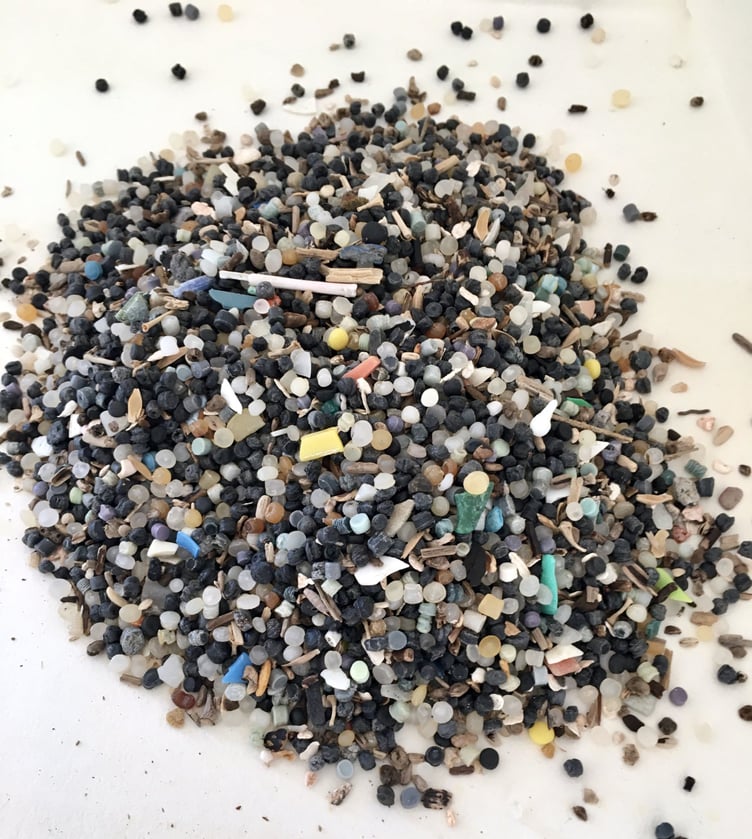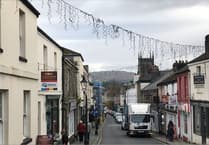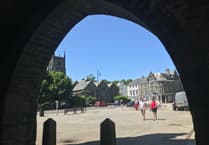TAVISTOCK artist, John Dixon is telling the story of plastic pollution through pollution art, writes Kat Archer.
John, who is a newly emerging artist has been creating beautiful artistic creations out of washed-up beach plastic.
From a lighter rainbow to a Fibonacci spiral, the art pieces John has created exhibit a visually-pleasing design through the ordered arrangement of plastic items against a plain white background. All of John’s artworks have been created using plastic that has been found on beaches, with many of the artworks featuring fishing and trawling materials such as fishing nets or line.
The pollution artwork not only serves as impressive visual art, but also a vehicle for education and increasing awareness about the global issue of plastic pollution.
John began creating these art pieces after going to South West beaches and witnessing the amount of washed-up litter on them. John said: ‘When I moved down here 20 years ago we started going to the beaches and we regularly came home with carrier bags of stuff.
‘I thought...I can do something with this.
‘One time I saw a luminous pink fishing line wrapped around some bladderwrack and seeing the combination of the black and the pink I began thinking some of this is quite attractive. It had an artistic quality.
‘Also, I thought there’s a message here . Maybe art could be used as a way of getting the message across.’

John only began creating the art this year at home but once the house became filled with these artworks, he decided to emerge as an artist.
Since then John has participated in a couple of exhibitions at Butchers Hall and Drawn to the Library, with the latest exhibition being the recent Drawn to the Valley open studios that ran from August 27- September 4.
Drawn to the Valley is a loose collaboration of artists in the Tamar Valley stretching down to Plymouth. The collaboration is a way of connecting other artists and is a collective that John joined this year as a way of helping him to get himself out there.
John described it as: ‘A way of meeting other artists and getting that confidence.
‘I have a good eye for design but I’m not trained in art or design.’
When discussing the creative process John said: ‘I’m quite creative and organised.
‘I like creating order out of chaos.
‘On the beach it’s normally a complete jumble, you never know what you’re going to find.
‘I see a piece and get inspiration.’
For John, a large part of the work is physically removing the plastic from the beach, this is where the creative process begins and ties in the environmental component of his work.
John described plastic pollution as: ‘A global issue.
‘The more we produce, the more that ends up in the ocean.
‘Plastic will not go away.
‘It’s a very useful material, but what we do with it after, that’s the problem.’
During John’s recent Open Studio at Tavistock Livestock Market Cafe the exhibition featured educational boards to educate visitors about the plastic issue including lifestyle changes people can make to prevent them from adding to the problem. John managed to sell two of the artworks, with the first one being his first sale which he said ‘felt great.’ But John explained that he is not motivated by the money.
John said: ‘A large part of it is to draw people in through the art to understand it’s a massive problem.
‘It was environmental first and my art followed. I’m community-minded too so it was a good way of combining the two.’
The art is not glazed and this was a conscious decision by John who didn’t want to create any disconnect between the art and the observer, he wants people to connect with the art, an important aspect of this connection, being able to touch it.
Through his pollution art, John is able to not only use the art as a form of self-expression, but also educate and inform, connecting individuals with the problem.
John used to work as a town planner for Plymouth City Council and is currently hoping to collaborate with Professor Richard Thompson from Plymouth University and Katrina Houghton from the Marine Biological Association. The point of the collaboration being the way John can use his pollution art to help scientists and researchers to get their message across. John explained: ‘There’s amazing research going on in Plymouth, but lots is behind closed doors.
‘I want to work out ways art can help them get their message across.’





Comments
This article has no comments yet. Be the first to leave a comment.